 Originally published May 6, 1994, in Comics Buyer’s Guide #1068
Originally published May 6, 1994, in Comics Buyer’s Guide #1068
Time to kill two birds with one stone, as they say (although I should emphasize that no animals have actually been injured in the making of this column.)
Several readers called to my attention, with some alarm, the April issue of Self magazine, a so-called women’s magazine that does big business in supermarket racks.
(Paul, of Peter Paul and Mary, has pointed out the narrowing of focus throughout the years in magazine titles. Started out with Time, which was vast and infinite, and Life, which was all-encompassing of everything that was going on. And as the years went past, and Americans became more and more self-obsessed, we got People, which was more specific than life, and then Us, which was just you and me, and now we’re down to Self. Probably the next magazine will be called Leave Me the Hëll Alone as we become total recluses. But I digress…)
If you can hold your breath while enduring the scented pages, you will turn to the table of contents and find a fascinating array. For every article such as “Are women being overmedicated in their quest for perfect health?” you’ll find three more articles that helped drive women in that direction in the first place. Articles such as “The big cleanup: Behind every glorious face is a good scrub,” and “Ayurvedic fitness… An ancient Indian system helps you find your perfect routine.”
And wedged in amongst breathtaking items as “Lipstick Trick: The Subtle glow of layering” is an article by Stefan Kanfer entitled “Pow Zap Pørņ: Today’s unfunny books are sending some nasty messages about women.” This is what the contributors’ section reads:
Hostility toward women in adult comic books outrages Stefan Kanfer. Formerly Time magazine’s book review editor, he is a curator at the new Capital Children’s Museum in Washington, DC… Kanfer is dismayed because the muck has soiled innocent “junk of a very high order.” His prescription? “The best way to get rid of a problem is to expose it.”
Now far be it from me, as a mere writer of stuff, to challenge the bizarre notion that comics should be something other than highly ordered junk. But the duplicity and revisionism that pervades Kanfer’s article is alarming… so much so that I felt compelled to respond.
I do not expect the letter that I wrote to Self to see print. For one thing, it’s too long. For another, it’s not particularly polite. However, I wrote it, and I sent it, and since I don’t want it to go to waste, I’ll run it here. It’s addressed to the editors of Self, and it goes as follows:
There is certainly nothing like unbiased, even-handed and informed commentary. Unfortunately, Stefan Kanfer’s “Pow Zap Pørņ” article was nothing like unbiased, even-handed and informed commentary. Kanfer’s personal biography and credits are certainly impressive enough; would that his ability to discuss a topic without rabble-rousing hysteria, misinformation, and a drastically slanted viewpoint was likewise striking.
I, similarly, am not unbiased in this matter. I have been a comic industry professional for twelve years, and a full time writer of comics for nearly half that time. Kanfer would doubtlessly term me an “apologist,” and if I felt today’s comic book industry had anything to apologize for, I would concur.
Kanfer makes his intentions clear up front in his depiction of Catwoman as a character who “vaults through the panels like a liberated lady. But she is merely the flip side of male sexism,” and quotes a section of this “sexist” dialogue to buttress his position. Curiously, Kanfer doesn’t bother to mention–or perhaps he’s simply unaware–that DC’s Catwoman comic (including the dialogue he cited) is written by Jo Duffy, an accomplished female writer. How nice that Kanfer takes offense on behalf of women everywhere, but how curious that the woman writer from whom the stories and characterization sprang has no problem with it.
Kanfer goes on to give a drastically slanted history of comics, filled with blind and mostly unattributed quotes. May I ask where the quotes from Marvel or DC are? Would the head of the Comics Code concur with Kanfer’s assessment of the CCA’s effectiveness? Did Kanfer call anyone? One of the few attributed quotes, from William Christensen of Comic Cavalcade, is in fact lifted from another print source, and uncredited to that source. (And by the way, may I inquire as to the whereabouts of all the copyright notices that are legally required for the artwork displayed in your article? That is a disturbing and unconscionable lapse on yours and Kanfer’s part.)
Kanfer depicts Dr. Frederick Wertham as savior and “notorious” publisher William Gaines as unsavory. Kanfer’s got it backwards. Wertham, a product of an ugly fifteen year period in America’s history that also gave us Japanese internment camps and McCarthyism, was a dubious researcher with an agenda as obvious as Kanfer’s. Speaking to juvenile offenders and discovering they read comic books proved absolutely nothing. Millions of kids read comic books. They weren’t all juvenile offenders. Wertham did not come within light years of proving cause and effect, quite possibly because there was none. But he didn’t have to, because he managed to whip the senate into enough of a frenzy that a witch hunt ensued. Bill Gaines, far from being the villain that Kanfer paints him to be, was one of the few who had the guts to stand up and fight for the First Amendment. Unlike Kanfer who pays lip service to the notion of favoring the First Amendment (I’ll get back to that later) Gaines put himself on the line. He should be applauded, not castigated. If the publishers had stood firm against the government, as Gaines did, instead of caving in, we might have a landmark reinforcement of our constitutionally-guaranteed freedoms instead of an on-the-record display of publishers knuckling under.
Are there comic books being published today with adult content? Yes, there are. Writer Neil Gaiman has pointed out the curious mentality in America wherein words by themselves can be adult, and artwork by itself can be adult, but the moment we combine words and pictures, the result must be the sole province of the child. In other countries, comic books are known and respected as entertainment for adults as well as children. But here, in a country that supposedly values freedom, critics would endeavor to hammerlock artistic and/or commercial expression. Adults should not be allowed to have comic book entertainment, except in those rare instances where it achieves Pulitzer Prize winning status. Then the Kanfer types will permit it; otherwise, it’s a “Let’s-put-a-stop-to-this” mentality.
I can appreciate the feelings by some that comics should continue to be harmless children’s fare, as it was in the old days (which are always better than now, even if they were wretched when they were actually happening). And such comics are still readily available, as Kanfer does point out in a most perfunctory manner. Indeed, the vast, vast majority of comics are still fairly innocuous material, ranging from Disney comics to superhero titles. I’d say over 90% of material falls under this category.
Kanfer makes comic book stores out to be snake pits of depravity where unwary children will discover hideous and obscene surprises… or even worse, seek them out and become perverts.
Nonsense.
The fact (if we dare bring up such a term) is that only a small fraction of comic stores carry material such as Betty. And those that do are wary of where it’s stocked, and they make sure not to sell it to children. Retailers are aware of their responsibility as members of their respective communities. They don’t want to anger parents… or the law, for that matter. There are far too many guardians of public morality out there for retailers to let down their guard.
Those few comic books that are published by major publishers and feature adult themes or language are invariably grouped under their own imprints (Marvel’s Epic line, DC’s Vertigo titles) and retailers are well-warned so as to handle them accordingly.
The children that Kanfer is so concerned about are perfectly safe from corruption. The only thing we’re left with, then, is the notion that kids reading standard superhero books might be exposed to women clad in tight-fitting costumes accentuating their breasts. Is having a strong and sexy body to be considered a negative image? If the answer is yes, then I’m rather confused. For on the cover of that Selfsame issue, the blurb reads “Get a strong & sexy body” as if that’s important.
It takes some serious temerity for a magazine that reeks of perfume; a magazine that runs article after article on such important female concerns as sexy bodies, lipstick, dieting and beauty; that objectifies women far more comprehensively, thoroughly, and offensively than comics as a body of work can ever hope to, and yet purports to be for women; that runs advertising emphasizing bare breasts and buttocks; I find that, in short, to be of far greater concern, and far more pernicious, than comics that show women as being tough, capable, and fighting side-by-side with men against the forces of evil.
The most disingenuous aspect of the article is Kanfer’s quandary over what to do about adult comics since he is such a supporter of the First Amendment. This attitude is all too common of the true First Amendment hypocrite. The argument always goes like this: “I am in favor of free expression for myself and those things that I like. However, I draw the line at those things which I find personally offensive, and they should be stopped.”
No, Mr. Kanfer, you don’t get to play it that way. You don’t get to say, “I support the First Amendment, but…” There is no “but.” The First Amendment wasn’t designed to protect material that no one finds offensive. Donald Duck is unlikely to require First Amendment shielding; Betty in Bondage, however, does. Yet it is against the latter that you, a nominal “First Amendment supporter,” sound the call to arms. You write scathingly of “First Amendment Publishing Company” as if that company’s output is something of which We, the People, should be ashamed. You are wrong. The fact that we live in a country where We, the People, are guaranteed the right to express ourselves in whatever way we see fit, is something of which we should be very proud.
If you are a true supporter of the First Amendment, then you must learn to tolerate that which you find personally upsetting, and consider it a price for living in a free society.
To add insult to injury, the editors of Self put forward a question in the Self poll: Should there be hearings by a committee of Congress to investigate the effects of violence and hostility toward women in adult comic books? Heaven help you, editors, if the answer you get is “yes,” and someone in government authority takes it seriously. Because, believe me, you don’t want that. You don’t want a return to the bad old days wherein elected representatives ran roughshod over the Constitution. Because if they come after comic books, there’s nothing to stop them from coming after things that other people find objectionable. Things such as… oh, let’s see… pictures of topless women, such as grace your magazine a mere two pages after your Self poll.
When you challenge the rights of freedom, do so with great care; because down the line, you may find yourself the next target, and the call to arms you sound today may be aimed at yourSelf tomorrow.
(Peter David, writer of stuff, cites yet another instance of how the Post Office gets its reputation. When I mailed out the FOE buttons, I weighed them both at the local PO and at the fulfillment house which did the actual mailing. Both agreed each package was just under two ounces. Third class postage would be .52 cents. So would First Class. Dumb old me, I figured, “Heck, let’s send them First class.” Imagine my alarm, then, when some people subsequently told me that their buttons arrived postage due for .23 cents. Upon my demanding an explanation, my local clerks told me the following: When packages go Third class, receiving post offices don’t double check the weight. Not so when First class packages come through. And if the local PO’s scales aren’t precisely calibrated with the sender, then they might decide (as some did in this instance, apparently) that the package was just over two ounces, and sock the recipient for additional postage. So either I could send the packages Third class and get service inferior to First class for the same price… or send them First class and be embarrassed. No wonder people nickname it “the post awful.”)
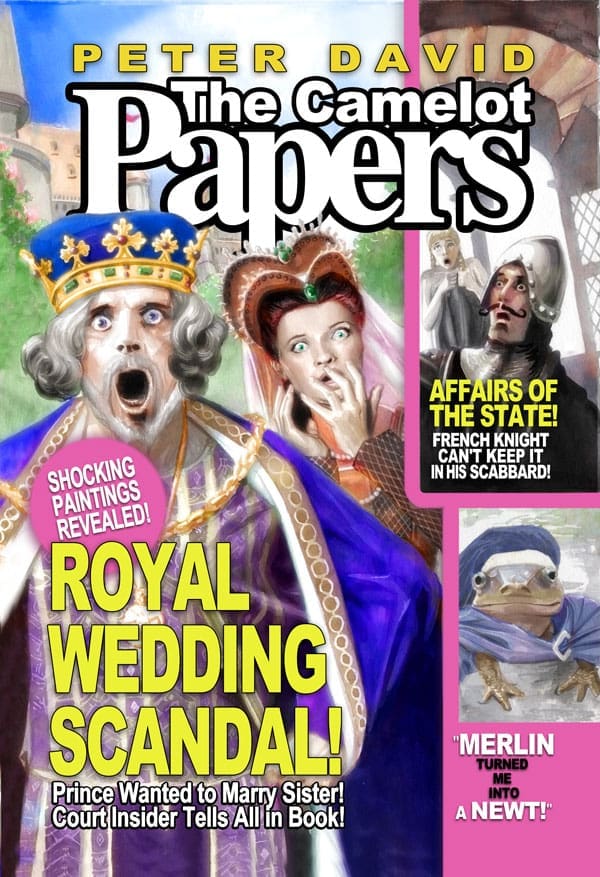
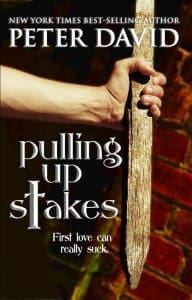
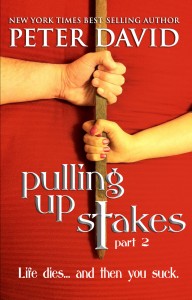
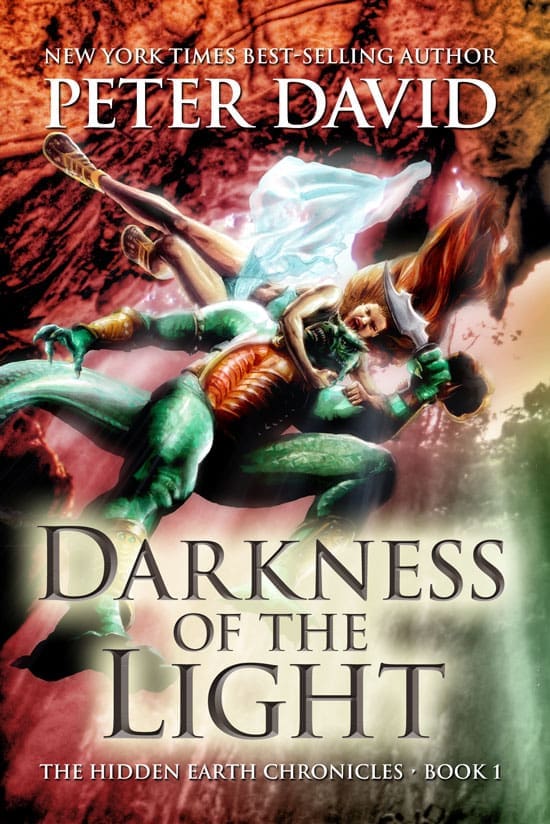
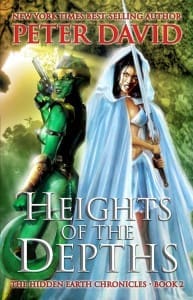
I recall (many years ago – in the 1970s, i believe, so i may be a little off on details) an apa-zine review i wrote of “Cloak & Dagger”, in which i pointed out that the story could be interpreted (without paying the words much overtime; i’m not Humpty Dumpty) as advocating censorship of pørņ.
.
I made mention of Dagger’s skintight outfit with dagger-shaped cutout that revealed her cleavage and went on down to reveal her navel (i remember it that way, anyway). And i said that a medium that so narrowly escaped the fires as comics really couldn’t afford to be standing around striking matches.
.
(This reminds me of the “Spirit” story, reprinted in Harvey Spirit #2, back in 1967 and subsequently reprinted again with text alterations that made it less funny, in which the narrator, a grade-school teacher, mentions passing the school psychologist, Dr Wolfgang Worry, holding his weekly book-burning…)
I couldn’t have been in the ’70s, since Cloak and Dagger didn’t debut until 1982.
On the larger topic, Peter’s description of Self could just as easily apply to the magazine today, along with Cosmo, Glamour, and all the rest. They seem to be breeding in those little checkout counter-side racks of theirs. And now there’s Maxim, so that young men can have their brains filled with gender-equivalent mindless, consumerist, sexist, stereotype-peddling crap. (Although I’ve noticed that the sexism in Maxim, like that in Self et al., is also directed at women. Funny, that.)
Yeah. Now that you mention it, it must have been the early 80s.
As you make no mention of such, I gather they never got back to you on that, nor did they publish the letter?
Of course not.
.
PAD
Do you recall what letter(s) were published about this article? Did they agree, disagree, or dispute what was said any?
.
Chris
Great stuff.
I feel a need to play the Devil’s Advocate here. I agree that this Kanfer dude sounds like a major douche, and women’s magazines have helped promote some awful things – like convincing women to starve themselves to death, sometimes literally.
.
But Catwoman with Jo Duffy and Jim Balent was typical of many comics featuring female protagonists. Duffy’s writing was good, but Balent’s art was pure fetish fuel. And while there is nothing wrong with enjoying some fetish fuel (I always had a thing for Red Sonja myself), I don’t think I can defend that run of Catwoman as being any great advance to how women are portrayed.
But Catwoman with Jo Duffy and Jim Balent was typical of many comics featuring female protagonists. Duffy’s writing was good, but Balent’s art was pure fetish fuel.
.
If the article had been the artistic obsession of portraying female characters like adolescent fantasy objects with pneumatic breasts and scanty clothing, I wouldn’t have had much to say about it. But he attacked the writing and the dialogue as being suffused with anti-feminism, and that’s where I took issue.
.
PAD
I’d agree with that. Most of the issues I have with portrayals of women in comics are about the art. Even that varies wildly by artist. One of the things that I really like about Fallen Angel is that the artists have used the art to emphasize the personalties of the female characters, not just draw sexy poses to pander. The women are sexy when they’re supposed to be sexy and they look tough when they’re supposed to be acting tough, even if they happen to be naked at the time.
One of my favorite moments in the “Fallen Angel” original run was when Slate showed up in Lee’s bathroom while she was trying to wash blood out of her costume. She was clad only in panties and white socks. Did she try to cover up? Did she go the “Oh my God, get out of here!” route? No. She proceeded to beat the living crap out of Slate. Mostly nude, she was still incredibly dangerous.
.
Curiously, I still remember one reviewer who loved the series up until that issue and then bìŧçhëd for MONTHS about the fact that I showed her mostly naked except for stocking feet. He didn’t mind the nudity; he took an insane amount of offense at the socks.
.
All kinds, I guess.
.
PAD
.
He was obviously offended by your pandering to all those other people while displaying your obvious prejudice towards those of the foot fetish persuasion.
And of course, there are plenty of people out there who would have no objection at all to a graphic scene of Lee beating the living crap out of someone, as long as she was fully clothed while doing so.
.
I will never understand this species.
Absolutely.
.
Superhero comics sometimes look schizophrenic. You have writing that celebrates strong women, but the purpose is defeated by art by the likes of Deodato, or Benes, or (horror) Greg Land.
And yet, consider the realm of pure “fantasy” art. The top names in that particular genre, whether male OR female, have very little difficulty with the idea of drawing “strong” women in incredibly provocative poses. Olivia (de Berardinis) and Julie Bell may be less prone to drawing the dreaded “helium breasts” but their artwork is inherently no less celebratory of strong women than the men you’ve chosen to belittle. Why should Greg Land or Jim Balent be treated as mere “fetish fuel” when Olivia and Julie’s artwork is aimed at a very similar target audience? In point of fact, Olivia has made a veritable industry out of “fine art from fetish” through her Bettie Page artwork. (FWIW, this isn’t some indictment against either Olivia or Julie as both women are incredibly talented; it’s just a suggestion for fairness.)
.
Of course, since the major audience for superhero comics has typically been overwhelmingly male (even when those “superheroes” are women), there’s been a greater tendency to draw the female “capes” in a manner that would be most likely to appeal to that male audience which generally means a minimalist costume and maximum cleavage and bøøbágë. And during the 1990s, we got a lot more of the “bad girls” who were drawn in a classically “good girl” art style which had a tendency to emphasize the breasts, whether in actual size or merely establishing a pose where the breasts were drawn “out in front” (such as a pose where the woman is leaning slightly forward from the waist).
I’m not against the fetish per se. Olivia and Julie mostly create posters and covers, and that is okay. It’s like PLAYBOY magazine, you know what you’re getting when you buy it.
.
What I find strange is the schizophrenia of supposedly serious writing (like, say, Matt Fraction on Uncanny X-Men) coupled with pure fetish artwork, like Greg Land’s. I would understand it if Fraction wrote soft-pørņ stories for Land to illustrate. But as it is, it looks like their working at cross purposes.
.
I do think the writing has evolved since the 1960s and the way women were portrayed then, but the artwork… well, we got the worst of it in the 1990s, but we still have some holdovers today.
.
But I do like artists that do sexy in a competent way. Alan Davis and Terry Dodson I like. Maybe it’s just my age showing, but the Image-inspired dudes (and Greg Pornface Land)… it’s not just that they have a risque style, it’s that they’re crude and silly too. And silly in a bad way.
What a fantastic, fantastic letter.
Stefan Kanfer seemed to have taken it upon himself to decide for women whether or not they measured up to his standards of feminism. Very obviously, that sort of attitude is dismissive of women and essentially anti-feminist. Any meaningful understanding of feminism would accept the notion that women are grown up enough to decide for themselves. It is not surprising that Kanfer should have lionized Dr. Wertham – who distrusted single sex households to the point that an involved father figure MUST (he supposed) be schtupping his boy.
The pictorial depiction of women in comics sometimes raises suspicions or judgments, but this may be less than it appears to be. No boy or man reading comics looks very much like the chiseled and massive heroes endemic to fantastic comics. Most of us look like Mole Man, Ben Urich, or the Steve Ditko era Spider-Man at the very most. These are archetypes, not family snapshots any more than Cinderella resembles the children being lulled to sleep with her story.
As for PAD’s First Amendment argument: He is right, but even one less orthodox in his devotion to this sort of freedom than he should recognize Mr. Kanfer’s argument as patronizing and mistaken.